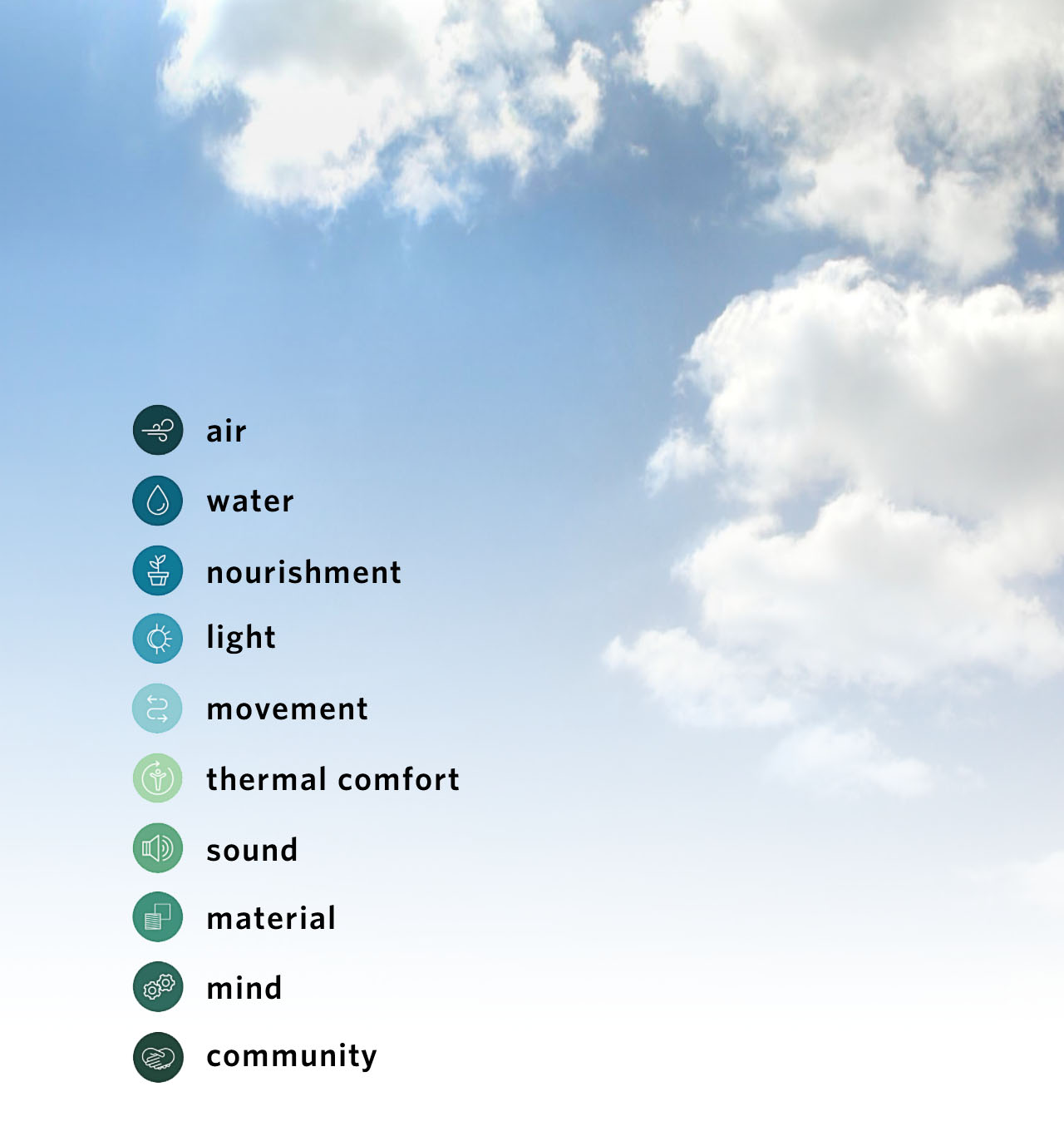WELL Building Standard
Ten Concepts of WELLness
Ellenzweig recognizes the importance of how the built environment affects human health, productivity, and WELLness. We consider the Ten Concepts of the WELL Building Standard in our designs and strive to implement the various features to achieve healthier buildings and happier occupants.
- Air concept aims to achieve high levels of indoor air quality across a building’s lifetime through diverse strategies that include source elimination or reduction, active and passive building design and operation strategies and human behavior interventions.
- Water concept covers aspects of the quality, distribution and control of liquid water in a building. It includes features that address the availability and contaminant thresholds of drinking water, as well as features targeting the management of water to avoid damage to building materials and environmental conditions.
- Nourishment concept requires the availability of fruits and vegetables and nutritional transparency. It encourages the creation of food environments, where the healthiest choice is the easiest choice.
- Light concept promotes exposure to light and aims to create lighting environments that promote visual, mental and biological health.
- Movement concept promotes physical activity in everyday life through environmental design, policies and programs to ensure that movement opportunities are integrated into the fabric of our culture, buildings and communities.
- Thermal Comfort concept aims to promote human productivity and provide a maximum level of thermal comfort among all building users through improved HVAC system design and control and by meeting individual thermal preferences.
- Sound concept aims to bolster occupant health and well-being through the identification and mitigation of acoustical comfort parameters that shape occupant experiences in the built environment.
- Materials concept aims to reduce human exposure, whether direct or through environmental contamination, to chemicals that may impact health during the construction, remodeling, furnishing and operation of buildings.
- Mind concept promotes mental health through policy, program and design strategies that seek to address the diverse factors that influence cognitive and emotional well-being.
- Community concept aims to support access to essential healthcare, build a culture of health that accommodates diverse population needs and establish an inclusive, engaged occupant community.


